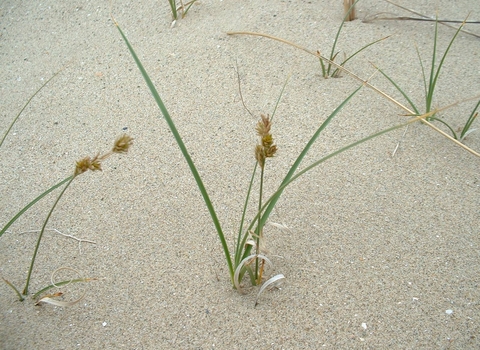
©Neil Wyatt
Sand sedge
Sand sedge is an important feature of our coastal sand dunes, helping to stabilise the dunes, which allows them to grow up and become colonised by other species.
Scientific name
Carex arenariaWhen to see
January to DecemberTop facts
About
Creeping through the sand dunes at our coastal sites, Sand sedge is a common perennial that uses underground stems (rhizomes) to spread. It is one of the first plants to colonise new or open sand dunes, its creeping stems spreading in straight lines below the surface of the sand, helping to bind and stabilise it.In turn, this allows the dunes to grow and become colonised by other species. Sand sedge has wiry leaves and flowers from May to July.
